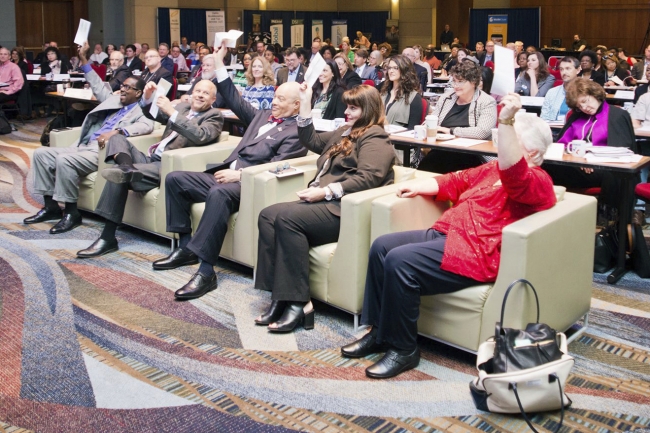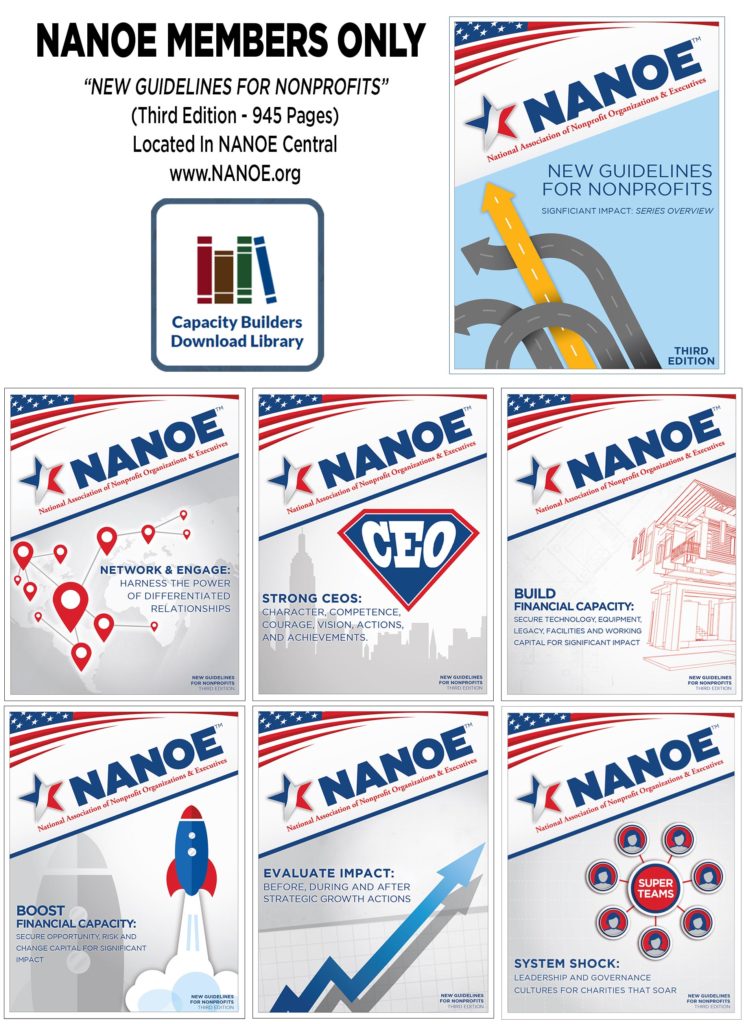How and Why Nonprofits Need to Think Differently
April 6, 2019
6 Reasons To Pay Board Members
April 7, 2019New Guidelines for Nonprofits by Kathleen Robinson & Jimmy LaRose

New Guidelines for Nonprofits reminds me of my youth. My name is Jack Horak and when I was growing up in the 1960s, it was common for parents of school age children to buy an encyclopedia for use in the home. In fact, there were door to door salesmen who sold their encyclopedia’s to families as a compendium of world knowledge that their school aged children should have at home, arranged alphabetically over several volumes, with sections on geography, science, history, government, and more. When we had homework to do, they said, we could pull the correct volume off the shelf, read and learn and then finish our assignments.
Of course, the internet has made encyclopedias obsolete, but the concept of a compendium of knowledge is alive and well; and I believe that Kathleen Robinson and Jimmy LaRose’s New Guidelines for Nonprofits is an encyclopedia of knowledge and guidance that you should have “on your shelf” if you are serious about the nonprofit sector and your service to it. Here is one way to say it: New Guidelines for Nonprofits contains an expansive breadth and depth of substantive material, rationally organized, and personalized enough to serve almost as a “to do” list if you want to excel in this field. Another way to say it is this: after almost four decades as a nonprofit lawyer and serving on many different boards, I frequently found myself nodding in agreement as I read this material. To be more specific, let’s look at a few of the Guidelines.
The first Guideline is entitled “Network and Engage.” I believe that the topic is important enough to be the first Guideline in the series simply because, in my experience, the success of any organization in the operating world, whether a business or a nonprofit, depends upon establishing viable and helpful connections to others (donors, suppliers, clients, civic leaders, banks, businesses, media, and more). The point is that the creation – of ideas and opportunities is an emergent phenomenon arising from the web of connections within a network, and a robust rationally constructed network produces better ideas and opportunities.
Guideline One makes this point clearly, and it then walks you through the types of connections an organization can have with other organizations (such as a partnership or joint venture), and discusses the meanings of the terms diversity, equity and inclusion as it applies to connectivity with individuals of different cultures within a network. The Guideline is supported by footnotes with references to supportive resources.
The Third Guideline is “Strong CEOs.” Again, based on my experience, a strong CEO, a strong leader, is a necessary condition to success; and he beauty of the Third Guideline is that “it’s all there” in writing. It is a long Guideline (164 pages), and in that sense it can function almost as an entire self-contained course on the topic of “leadership.” Many of the leadership coaches I’ve work with over the years could learn from the rich content in this Guideline. Perhaps my favorite line in the Guideline is in the summary: “Leadership matters! High-performing nonprofits reached significant scale and impacts through the leadership of CEOs and executive teams that possessed competence and strength of character.”
Guideline Five addresses what I believe is the Holy Grail and ultimate contemporary challenge for nonprofit sector leaders: “Evaluate Impact.” For too long, in my opinion, nonprofit organizations have been able to shroud their performance (good or bad) behind the mission. The inherent, almost pristine moral appeal of a mission or mission statement (Feed the Children, Save the Environment, or others) appeals to emotion and helps with fund raising, but has nothing to do with whether the programs under the mission really made a difference. Candidly, many sector leaders are wary of this admonition because it is like a mandatory report card we now get — telling us if they are walking the walk or just talking the talk. This is not an easy task, but the “whys and wherefores” in support of the requirement are all spelled out in the text of the Guideline.
Guideline Five also makes it clear that Measuring Impact has become a permanent fixture in the sector: you must “build a strong measurement and evaluation capacity within your organization.”
Let me close with comments about Guidelines Three and Four, entitled “Build Financial Capacity” and “ Boost Financial Capacity.”
These are the “money sections” of the encyclopedia, and they accurately make it clear that nonprofits need to be “well capitalized” if they hope to move the social needle to the better side of the gauge in a meaning way. Nonprofits need strong balance sheets — ones that will get them through the ups and downs of operations – not just good cash flow during any one measuring period.
What I particularly like about Guideline Three is the breadth of the suggestions for ways to do this – making it clear that you can win more games with lots of bunts and singles (several small sources of revenue that add up), than with grand slams (the occasional large gift that came out of nowhere). Cultivate individual donors, develop a planned giving program, create new mission-related revenue-generating ventures, secure longer-term investment income, are just some of the topics covered by this Guideline.
Guideline Four — Boost Financial Capacity by Securing Opportunity, Risk, and Change Capital – goes in a slightly different direction to discuss a new and emerging world of finance that is best identified by some of the terms that attach to it, such as impact investing, social investing, Benefit Corporations, Social Impact Bonds, Venture Philanthropy, and “Triple Bottom Line.” Guideline Four unpacks and explains much of the nuance and complexity that emerges when nonprofit and for-profit activity is mixed in the same vessel, and my caveat to this material not to go into it unless you have expert legal, accounting and financial advisors at your side.
As a said above, New Guidelines for Nonprofits is a vast compendium of important knowledge well worth having on your bookshelf if you are serious about the nonprofit sector or your role within it.
New Guidelines for Nonprofits can be reviewed by joining the National Association of Nonprofit Organizations & Executives.
New Guidelines for Nonprofits by Dr. Kathleen Robinson was written by John Horak Director of The Alliance for Non-Profit Growth and Opportunity (TANGO) John Horak Esq. (Jack) joined TANGO on October 1, 2016 after a 36-year legal career at the Hartford office of the law firm Reid and Riege, P.C. Jack was a member of the firm’s Business Law Practice, where he created the firm’s Nonprofit Organization Practice Group. Jack was the principal author of the Reid and Riege Nonprofit Organization Report, a quarterly publication distributed throughout the United States; and also regularly published articles and editorials on legal and policy issues in Philanthropy Magazine, the Hartford Courant the Connecticut Law Tribune, and the Hartford Business Journal where he writes a regular editorial column entitled “Rule of Law.”
Jack is also a contributing author to InsideCharity.org
New Guidelines for Nonprofits by Dr. Kathleen Robinson was first posted at InsideCharity.org

1 Comment
[…] co-founder, Kathleen Robinson, has defied industry convention by releasing NEW GUIDELINES FOR NONPROFITS to address the ways charity needs to change. Dr. Robinson spent five years hosting hundreds of […]